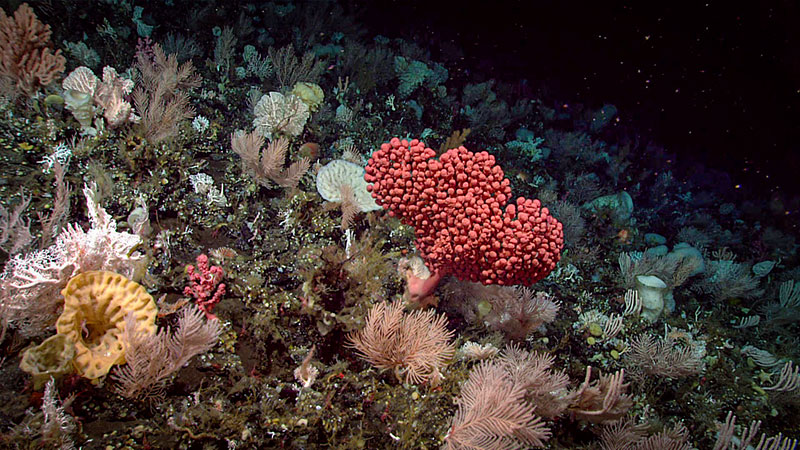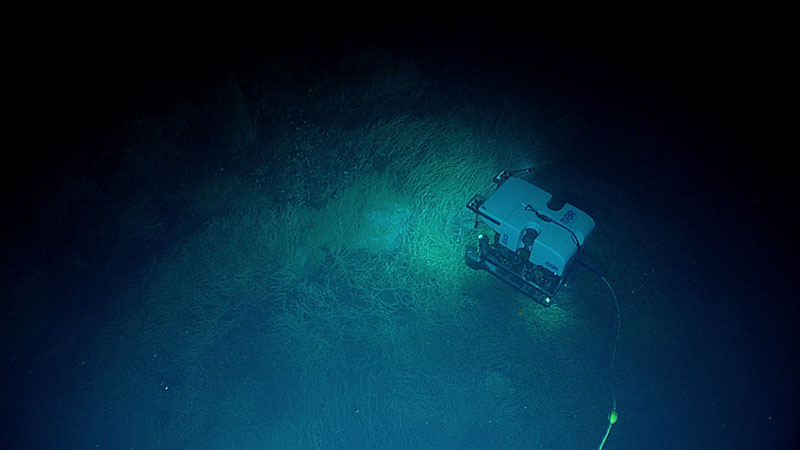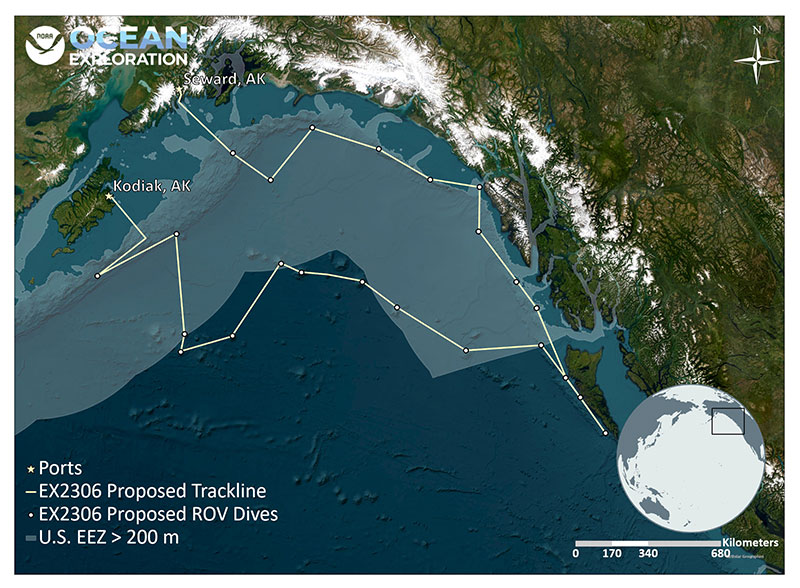Seascape Alaska 5: Gulf of Alaska Remotely Operated Vehicle Exploration and Mapping
(EX2306)
Expedition Overview
The Seascape Alaska 5 expedition will commence on August 23, 2023, in Kodiak, Alaska, and conclude on September 16, 2023, in Seward, Alaska. The team will work to fill gaps in our understanding of the region by conducting focused mapping and remotely operated vehicle (ROV) operations. Operations will focus on exploring deep waters greater than 200 meters (656 feet) for mapping operations and 250 meters (820 feet) for ROV operations in U.S. waters, the high seas, and Canadian waters off Alaska.
Despite contributing the largest area to the U.S. Exclusive Economic Zone (EEZ) and playing a critical role in our nation’s economy and national security, deep waters around Alaska remain one of the least explored areas in the United States. Approximately 34% of the seafloor around Alaska has been mapped to modern standards and just a fraction of that has been visibly surveyed. Yet we know that Alaskan waters hold vast resources and wonders – from diverse coral and sponge communities to commercially important invertebrates and fish, mud volcanoes, gas seeps escaping from the seafloor, and more. Increasing our understanding of where these features and fauna are found; how they operate; and how they are connected to each other, the greater Earth environment, and to us is critical to sustainably managing and protecting these areas.
During the Seascape Alaska 3 expedition, the team will work to fill some of the gaps in our understanding of the region by conducting focused mapping and remotely operated vehicle (ROV) operations, with a focus on waters deeper than 200 meters (656 feet) off the Aleutian Islands.
Mapping operations will serve as the basis for planning and executing ROV dives during the expedition. Given the sparsity of mapping data in the region, in many instances, the team will follow a “map and dive” approach, collecting mapping data the night before a dive to guide the path of the ROV on a dive taking place the following morning. These mapping data will also inform future exploration efforts, be used to establish a baseline assessment of the ocean environment, increase understanding of marine life and habitats to inform management decisions, and increase public awareness of ocean issues.
Despite contributing the largest area to the U.S. Exclusive Economic Zone (EEZ) and playing a critical role in our nation’s economy and national security, deep waters around Alaska remain one of the least explored areas in the United States. Approximately 34% of the seafloor around Alaska has been mapped to modern standards and just a fraction of that has been visually surveyed. Yet we know that Alaskan waters hold vast resources and support stunning and important ecosystems — from diverse coral and sponge communities to commercially important invertebrates and fish, and more. Increasing our understanding of where these features and fauna are found; how they operate; and how they are connected to each other, the greater environment, and to humans is critical to sustainably managing and protecting these areas.
All of the 2023 Seascape Alaska expeditions are being planned and conducted from a place of respect for and recognition of the Indigenous peoples of Alaska and their connection to and knowledge of the ecosystems that sustain livelihoods, traditions, and communities. By communicating and engaging with tribal communities about the work being conducted, we hope to gain insight to continually improve how NOAA partners with local and indigenous communities, approaches the acknowledgement and incorporation of indigenous knowledge in our work, and ensures the wise use and conservation of the state’s marine resources.



Originally published August 17, 2023